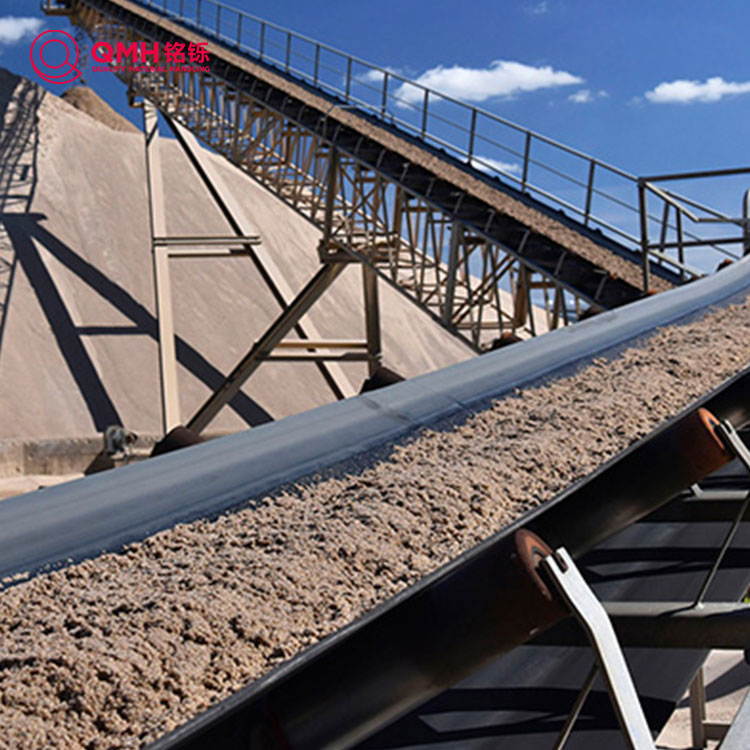What Makes Fabric Conveyor Belts the Ideal Choice for Industrial Applications?
2025-09-10
In today’s fast-paced industrial environment, the demand for efficient, durable, and cost-effective material handling solutions continues to grow. Among the various options available, fabric conveyor belts stand out as a preferred choice for multiple industries, including mining, manufacturing, logistics, food processing, and packaging. Designed with layers of synthetic fabrics and specialized rubber compounds, these belts provide high tensile strength, flexibility, and superior load-bearing capacity, making them suitable for a wide range of conveying applications.
Why Choose Fabric Conveyor Belts for Your Industry?
Fabric conveyor belts are engineered to deliver outstanding performance in demanding industrial environments. Unlike steel cord belts, they are lighter, more flexible, and easier to install while still offering exceptional durability and efficiency. Below are the key reasons why businesses prefer fabric conveyor belts:
Superior Strength and Flexibility
Fabric conveyor belts are typically constructed using layers of polyester, nylon, or cotton fabrics coated with high-quality rubber compounds. This layered structure provides:
-
High tensile strength to withstand heavy loads
-
Excellent flexibility for smooth operation over short and long distances
-
Low elongation properties to reduce maintenance needs and belt adjustments
Cost-Effective and Easy Installation
Fabric belts are significantly easier to splice and install compared to steel cord belts, which translates into reduced downtime and lower operational costs. Their lightweight design minimizes the need for heavy installation equipment.
Wide Range of Applications
From transporting coal in mining operations to moving packaged goods in warehouses, fabric conveyor belts are used across industries including:
-
Mining and quarrying
-
Cement and construction
-
Agriculture and grain processing
-
Logistics and warehousing
-
Food and beverage packaging
Resistance to Wear and Tear
High-quality rubber compounds ensure that fabric conveyor belts withstand abrasion, cuts, and impacts even in harsh environments, leading to longer operational lifespans and better ROI.
Understanding how fabric conveyor belts are designed and function is critical when choosing the right product for your business. A typical fabric conveyor belt consists of several key components:
Belt Structure
-
Top Cover: Protects the belt from abrasion, chemicals, and temperature variations
-
Carcass (Fabric Layers): Provides strength and flexibility; usually made of polyester, nylon, or cotton
-
Bottom Cover: Enhances friction between the belt and the pulleys
-
Skim Coats: Thin rubber layers between fabric plies improve bonding and flexibility
Technical Specifications of Our Fabric Conveyor Belts
| Parameter | Specification Range | Description |
|---|---|---|
| Belt Width | 300mm – 2200mm | Suitable for small to large-scale applications |
| Fabric Type | EP (Polyester/Nylon) or NN (Nylon/Nylon) | Ensures strength and durability |
| Number of Plies | 2 – 6 plies | Adjusted based on load requirements |
| Tensile Strength | 200 N/mm – 2500 N/mm | Handles light to heavy-duty material handling |
| Top Cover Thickness | 2mm – 12mm | Designed to match abrasion resistance needs |
| Bottom Cover Thickness | 1.5mm – 6mm | Optimizes pulley grip and belt stability |
| Operating Temperature | -40°C to +80°C | Suitable for extreme environments |
| Surface Profile | Smooth or Rough Top | Enhances grip for specific applications |
Energy Efficiency and Reduced Maintenance
With a lightweight carcass and low rolling resistance, fabric conveyor belts consume less energy compared to alternative options. Additionally, their simple design makes inspections and maintenance more straightforward, lowering operational costs.
What Factors Should You Consider When Selecting Fabric Conveyor Belts?
Choosing the right fabric conveyor belt involves evaluating several factors to ensure optimal performance and longevity. Here are the most important considerations:
Load Capacity and Application Requirements
The weight, size, and nature of the materials being transported significantly influence the belt selection. Heavy-duty mining applications require high-tensile-strength EP belts, while lighter logistics operations may only need two-ply belts.
Operating Environment
Temperature extremes, humidity, and exposure to chemicals or oils can affect belt performance. For high-temperature environments, belts with heat-resistant rubber compounds are recommended. For food processing, belts must comply with strict hygiene standards.
Surface Profile Needs
-
Smooth Surface Belts are ideal for standard conveying operations.
-
Rough Top Belts offer better grip for inclined conveying or handling delicate packages.
Abrasion and Impact Resistance
In environments where sharp or heavy materials are transported, selecting a belt with higher abrasion resistance and thicker top covers ensures a longer lifespan.
Compliance and Safety Standards
Ensure that the belt meets relevant international quality standards like ISO, DIN, or RMA for safety, efficiency, and durability.
FAQs About Fabric Conveyor Belts
Q1: What are the main advantages of fabric conveyor belts over steel cord belts?
A: Fabric conveyor belts are lighter, more flexible, and easier to splice, making them cost-effective and ideal for short to medium-distance material handling. While steel cord belts are preferred for extremely heavy-duty applications, fabric belts are better suited for a wide variety of industries requiring efficient and adaptable conveying solutions.
Q2: How do I determine the right fabric conveyor belt for my application?
A: Start by analyzing your material characteristics, load capacity, belt speed, and environmental factors. Consider the belt’s tensile strength, number of plies, cover thickness, and temperature resistance. Consulting with experts ensures that you choose a belt designed specifically for your operational needs.
Choose QMH Fabric Conveyor Belts for Reliability and Performance
In today’s competitive industrial landscape, having the right conveyor belt can make a significant difference in efficiency, cost control, and long-term operational success. QMH’s fabric conveyor belts are engineered with premium materials, advanced manufacturing techniques, and strict quality control to deliver maximum durability and reliability.
Whether you’re managing a high-capacity mining operation, a busy logistics hub, or a precision-driven food processing facility, QMH offers customized solutions tailored to your unique requirements. Our technical team ensures that you get the right specifications and seamless support for installation and maintenance.
Ready to optimize your material handling systems? Contact us today to discuss your project needs and discover how QMH fabric conveyor belts can drive your business forward.



